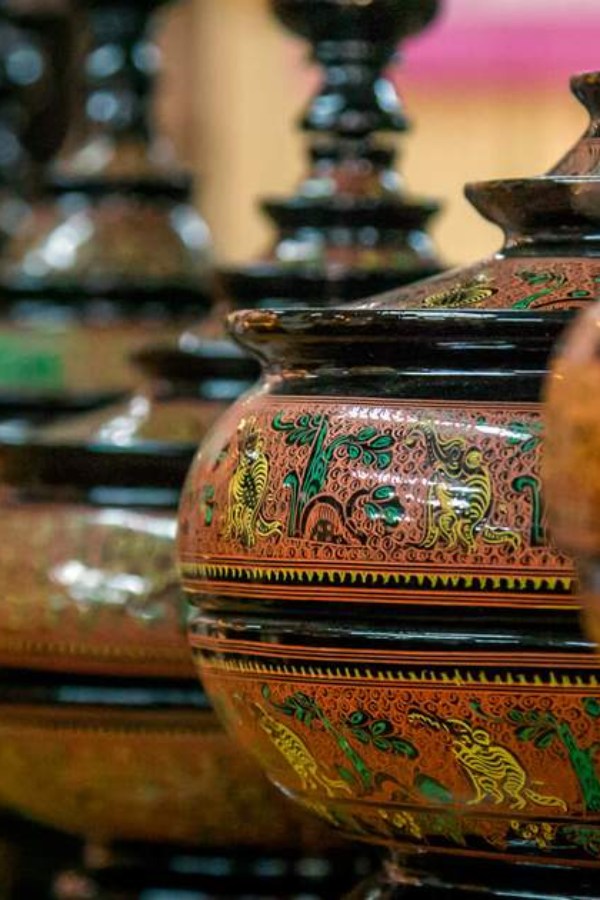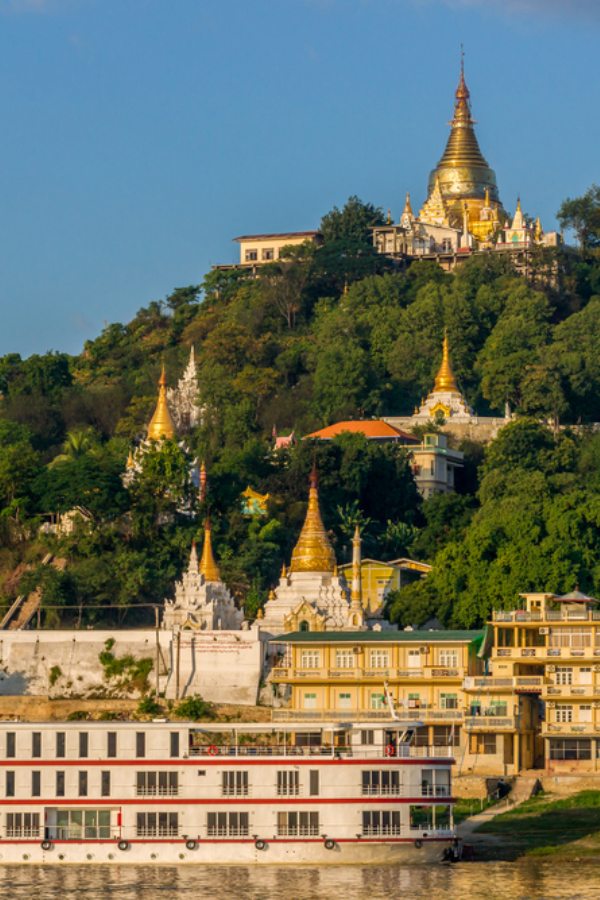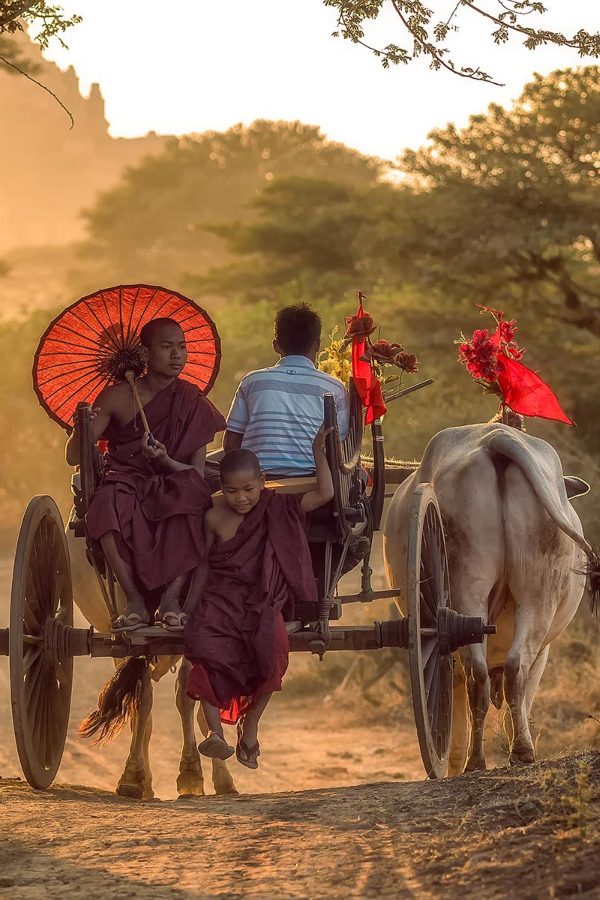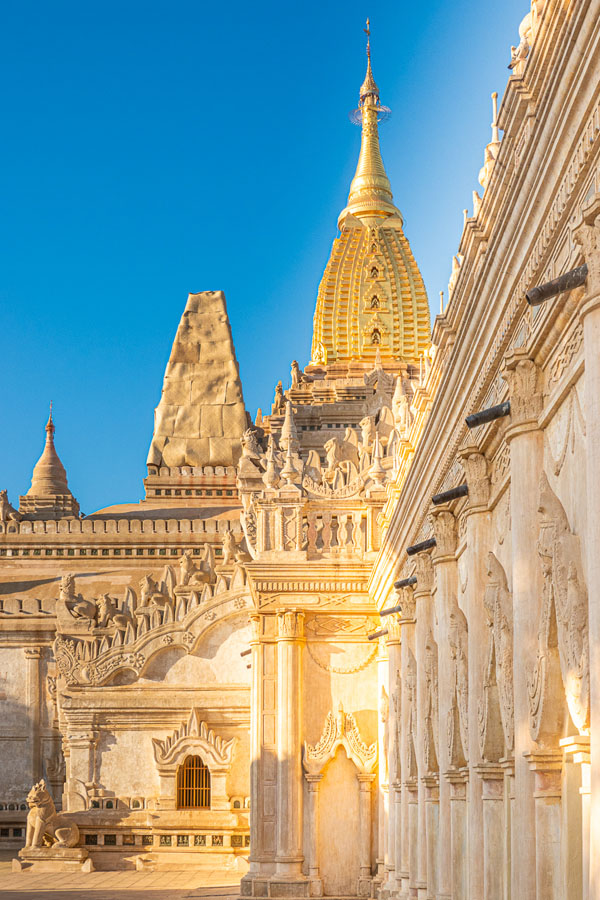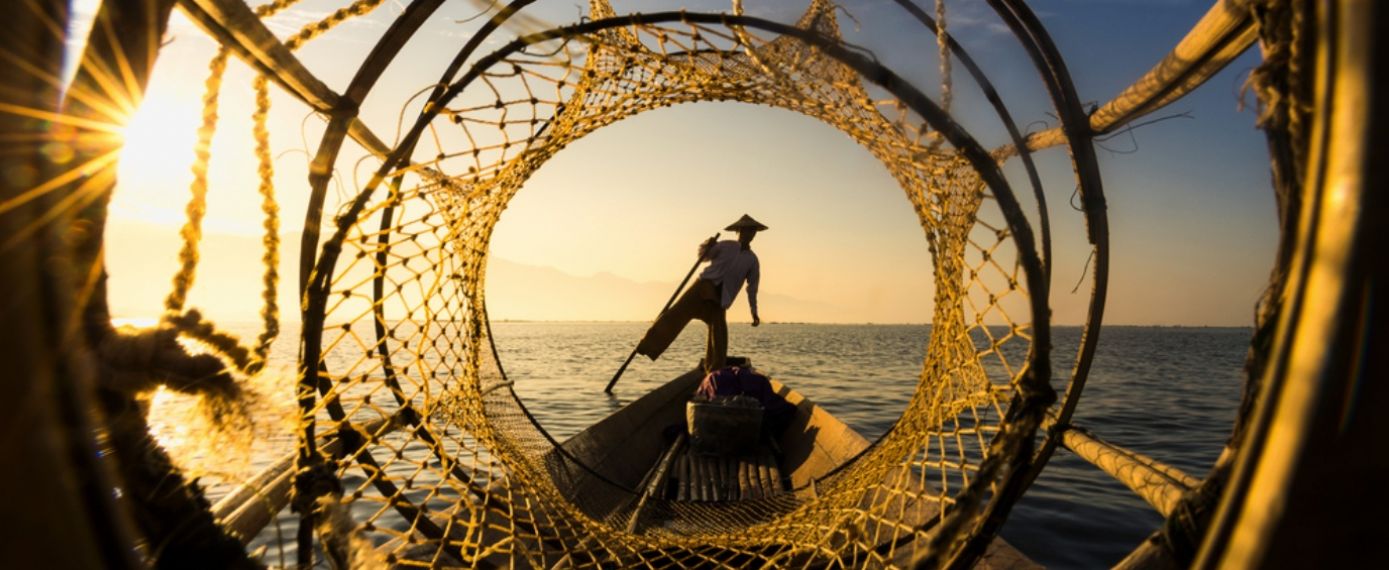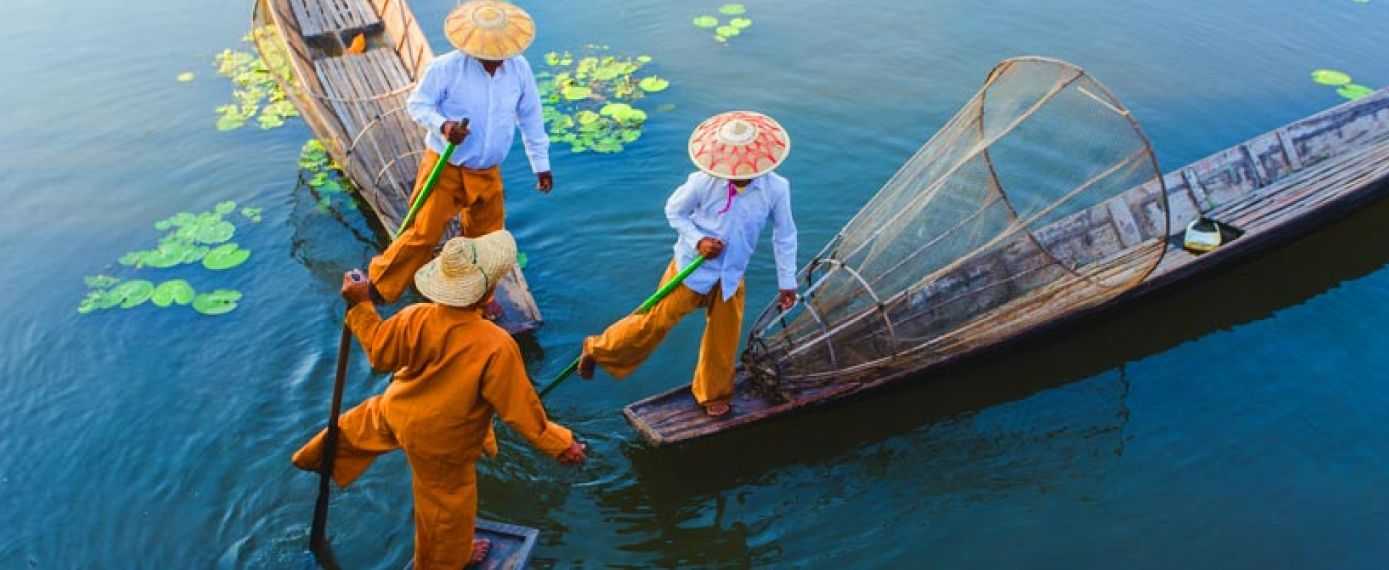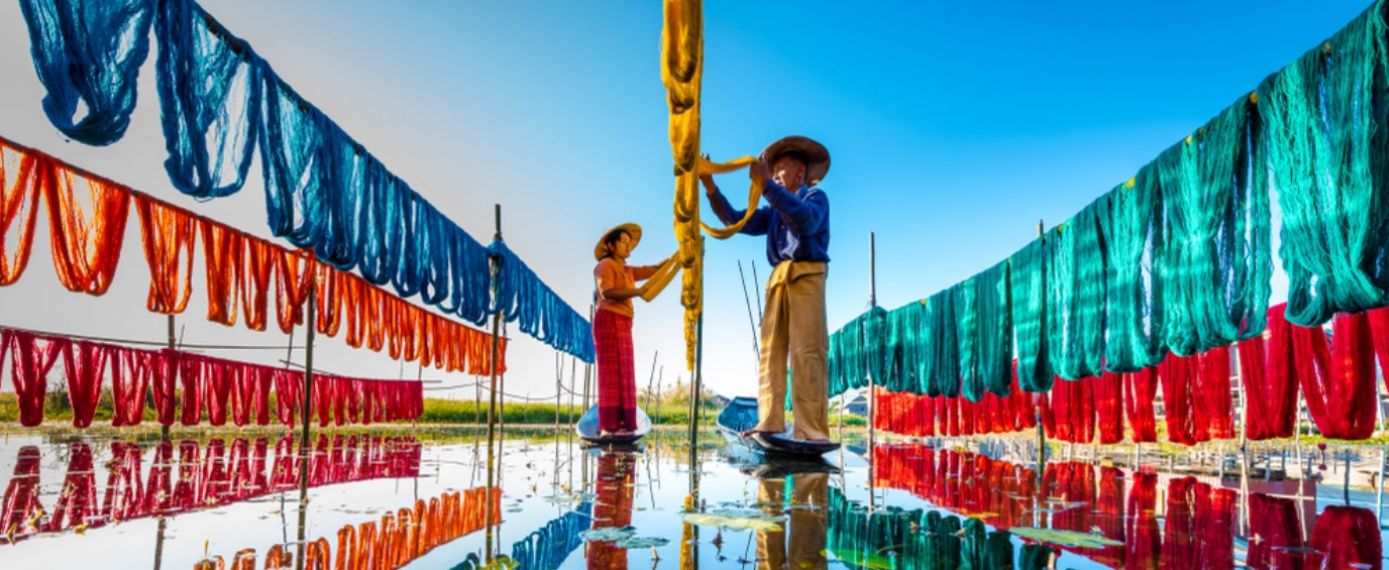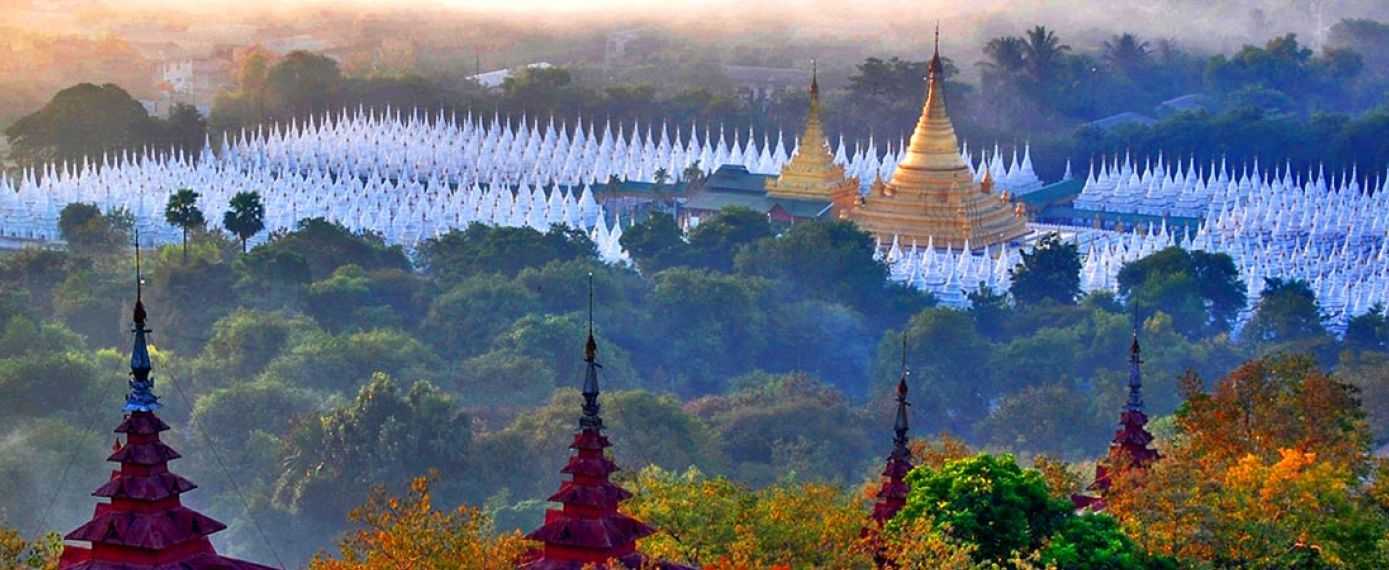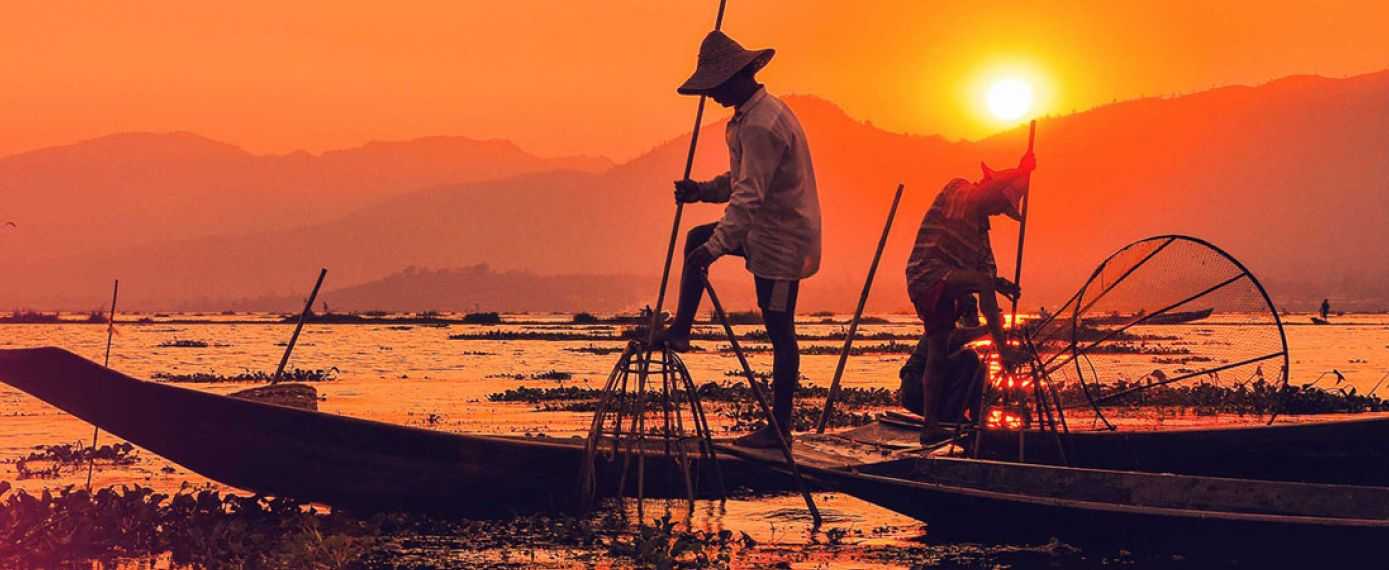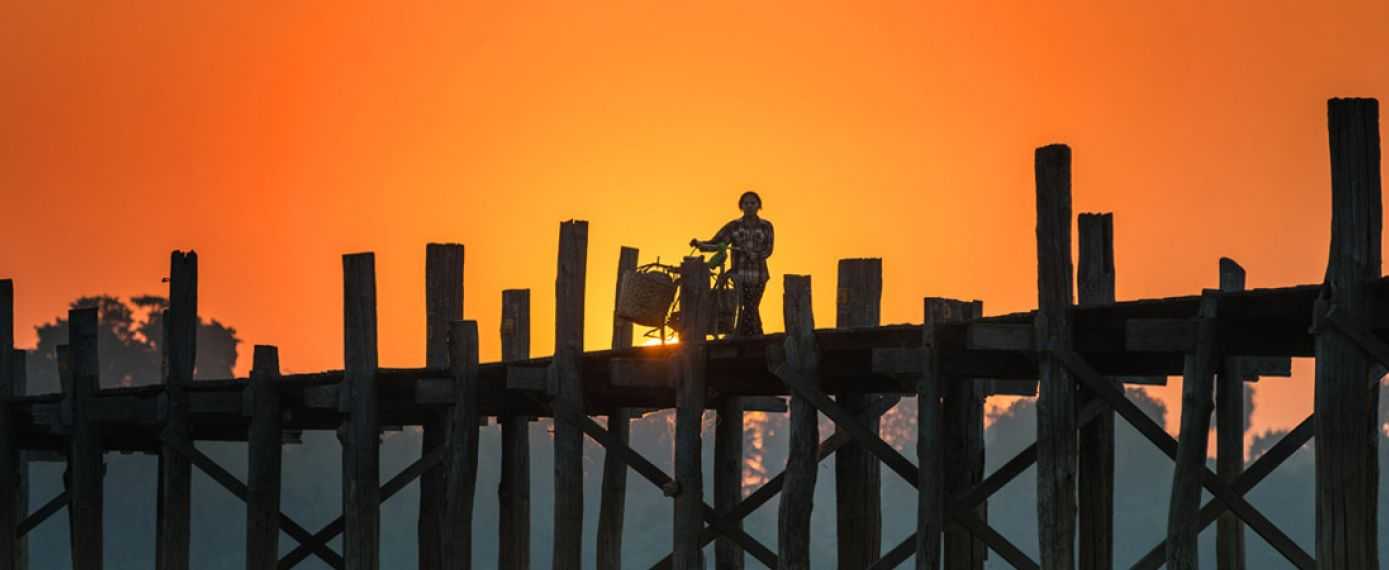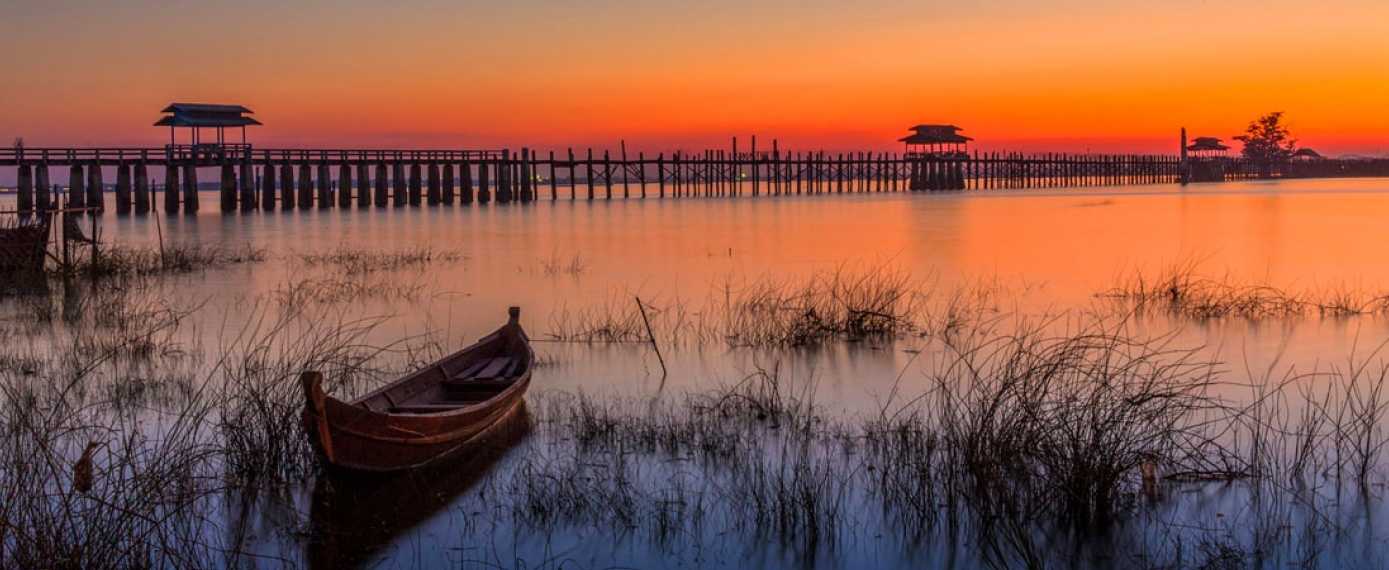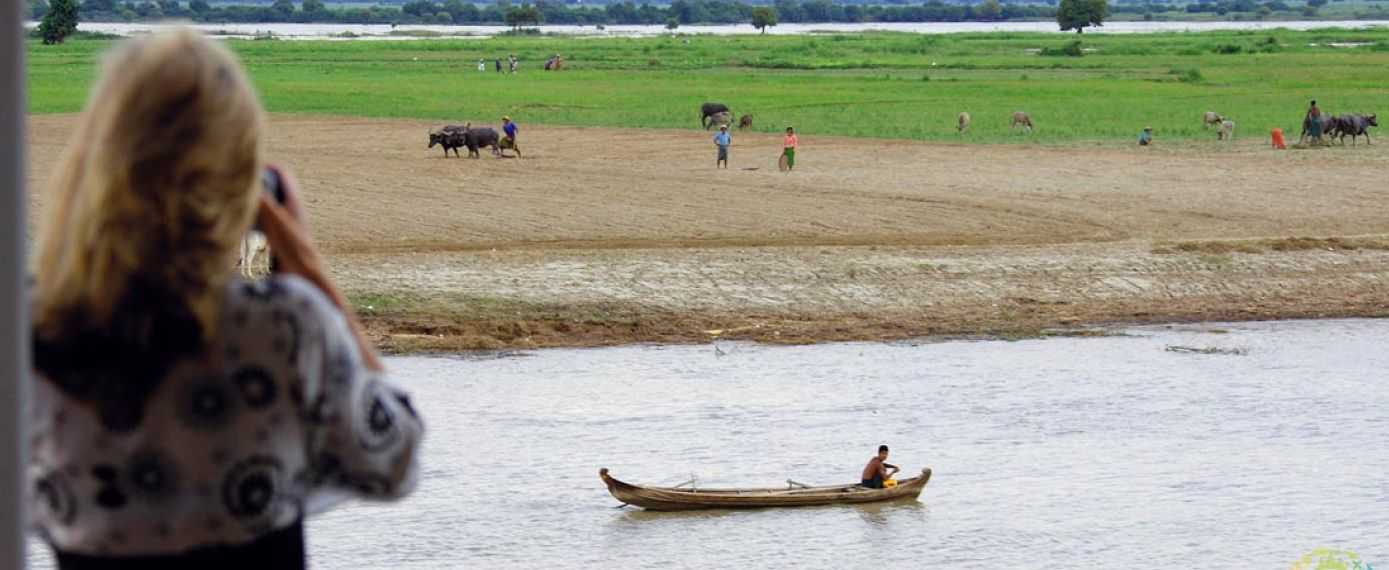Bagan Tours
Bagan is located on the banks of the Ayeyarwady River (Irrawaddy), a few miles south of Mandalay and north of Yangon. During the heyday of Bagan, this was the center of the Pagan Kingdom from the mid-9th to the end of the 13th centuries. More than 10,000 Buddhist strutures have been built here, nevertheless, only 2,000 remain until now. Formerly inhabited by between 50,000 and 200,000 people, the lost city is now largely deserted, with most of the local population confined to settlements on the peripheries, leaving the monuments rising in the grassy plains. Known as the “Bagan Archaeological Zone”, the ancient monuments of different periods stretch over a vast area on the bank of Ayeyarwady river up to the Turintaung range. Although the best way to explore these temples is on foot, a unique way to enjoy a panoramic view of the Bagan temples is taking a ride on a hot air balloon for a sunrise or sunset. For those who are not interested in a balloon ride, simply climb up to the top terrace of the Bagan viewing tower and enjoy the wide expanse of temples. The town is not only about temples. One also can take a day hiking Mount Popa, an important pilgrimage site with several temples dedicated to the ancient spirit atop the mountain; take a boat ride along the Irrawaddy River, the lifeline of Myanmar, which stretches 2,170 km across the country, passing through Bagan; take a cycling trip to explore the countryside of Myanmar from the back roads.
How to reach
Via Nyaung U Airport and long distance intercity bus connections to other provinces, cities in Myanmar.
Bagan TOURS RECOMMENDED FOR YOU
This 15-day journey is a tailor-made package we specially designed for all passionate clients looking for a longer and more immersive experience in Myanmar. By different modes of transport, from plane to car to horse-cart and motorboat, sometimes barefoot, we will take you to experience the most colorful and distinctive senses of Myanmar, such as the shimmering Shwedagon pagoda in Yangon under the sunset, a laid-back horse-cart ride in Ava, a hill village venture in Pindaya, traditional fishing techniques in Inle Lake, or balmy relaxation on the pristine beach of Ngapali.
Only From $2850/person
All Inclusive ServiceThis Tour
This 16-day journey is a varied one, giving you a flavor of the enchanting Burma with a fantastic mix of famous highlights and authentic off-the-beaten-track experiences. Beside the majestic sunset moment taken under the world-famous Shwedagon pagoda, an adventure back in time to thousands of ruined temples in Bagan, or an exciting ride around ancient Ava with an old horse carriage, there will be plenty of opportunities to interact with wonderful locals and learn about rural life anywhere you stop. As a wellness retreat, there will be some free days on Ngwe Saung Beach at the end to relax and rewind from your memorable trip.
Only From $3120/person
All Inclusive ServiceThis Tour
Being a country of rich culture, alluring scenery, and hospitable people, Myanmar is an inviting destination for anyone. It is astounding to see that Myanmar today is still full of legends and gold pagodas and gold palaces—a legendary golden land. This 8-day package showcases the hidden gems of Myanmar, from its impressive collection of world-famous pagodas from the very past, such as Shwedagon and Shwezigon, to its pristine landscapes and light-hearted people. As the length of the trip allows, you could have the chance to explore and get to understand the fascinating country unhurriedly and intensively, with a series of iconic highlights such as the Ananda Temple, the mighty Irrawaddy River, Mandalay Hill, Indein's stupa jungle, and many more.
Only From $1360/person
All Inclusive ServiceThis Tour
Welcome to Amazing Myanmar on this introductory tour to the country’s most famous and breathtaking destinations! From the bustling city of Yangon to the final royal capital of Mandalay and the ancient temples of Bagan, this trip will offer a journey of discovery and amazement. Visit the most renowned religious sites. Witness the impressive structures of the UNESCO World Heritage Site of Bagan. Embark on scenic boat trips along the iconic Irrawaddy River and around the stunning Inle Lake. Throughout 11 days of the tour, you will enjoy comfortable accommodations and delicious local food. Prepare to immerse yourself in Myanmar's rich culture and history on this fascinating adventure.
Only From $2255/person
All Inclusive ServiceThis Tour
An isosceles triangle made of Mandalay, Bagan, and Inle Lake is our main focus on this 6-day tour. The tour will give you the opportunity to obtain unforgettable insights into Myanmar culture, from Mandalay's giant book pagoda in Kuthodaw to the original temple architecture of Ananda in Bagan to the unique cultivation and rural floating life on Inle Lake. For anyone who is keen on cultural and natural beauty, the tour is specially designed for you as a perfect, short, relaxed escape.
Only From $990/person
All Inclusive ServiceThis Tour
Take the best advantage of time to explore incredible history, culture, wonderous architecture, and the warm generosity of Burmese people on this 5-day Myanmar tour. From the sprawling urban city of Yangon to the typical rural village in Inle Lake, you will have the chance to catch the unforgettable sunset from the sacred Shwedagon Pagoda, a series of must-see immortal temples and pagodas in Bagan, as well as learn about rural life and the different floating crops being grown, adding to the charming beauty of Inle Lake.
Only From $950/person
All Inclusive ServiceThis Tour
For all who are seeking an escape from the busy day-to-day life, a week in the four main destinations of Myanmar from north to south may be particularly satisfying. The amazing blend of mysterious golden temples, breathtaking countryside scenery, and all-endearing locals will offer you the real taste of tranquil Myanmar, where time is passing slowly. Boasting a beautiful country awash with sunlight, there are also plenty of sublime opportunities to peace your mind in a magical sunset everywhere you stop and look forward to a new beginning in every glorious sunrise.
Only From $1225/person
All Inclusive ServiceThis Tour
The tour is tailored for travelers who wish to explore carefully the history, culture, people, and nature of enchanting Myanmar. With our experienced local guides, you will have the chance to learn fully about the history of Buddhist culture, uncover the mystery behind beautiful ancient monuments in Bagan, immerse yourself in the natural atmosphere and rural landscapes, relax in a floating hotel, and experience many more things that await you.
Only From $1620/person
All Inclusive ServiceThis Tour
Experience the beautiful history, culture, and hospitality of Burma during this luxury 10-day land tour and cruise package as you explore the enchanting treasures that the country has to offer. You are to discover a vibrant but charming Yangon with beautiful streets full of colonial buildings and the most successful historical work of Shwedagon pagoda; explore Bagan's mystery by visiting a series of red-brick temples dating back to the very old era; as well as the silently lovely village in Mandalay before flying towards Heho and spending your very last relaxing and refreshing days in the poetic Inle Lake.
Only From $1850/person
All Inclusive ServiceThis Tour
This 15-day journey is a tailor-made package we specially designed for all passionate clients looking for a longer and more immersive experience in Myanmar. By different modes of transport, from plane to car to horse-cart and motorboat, sometimes barefoot, we will take you to experience the most colorful and distinctive senses of Myanmar, such as the shimmering Shwedagon pagoda in Yangon under the sunset, a laid-back horse-cart ride in Ava, a hill village venture in Pindaya, traditional fishing techniques in Inle Lake, or balmy relaxation on the pristine beach of Ngapali.
Only From $2850/person
All Inclusive ServiceThis Tour
This 16-day journey is a varied one, giving you a flavor of the enchanting Burma with a fantastic mix of famous highlights and authentic off-the-beaten-track experiences. Beside the majestic sunset moment taken under the world-famous Shwedagon pagoda, an adventure back in time to thousands of ruined temples in Bagan, or an exciting ride around ancient Ava with an old horse carriage, there will be plenty of opportunities to interact with wonderful locals and learn about rural life anywhere you stop. As a wellness retreat, there will be some free days on Ngwe Saung Beach at the end to relax and rewind from your memorable trip.
Only From $3120/person
All Inclusive ServiceThis Tour
Being a country of rich culture, alluring scenery, and hospitable people, Myanmar is an inviting destination for anyone. It is astounding to see that Myanmar today is still full of legends and gold pagodas and gold palaces—a legendary golden land. This 8-day package showcases the hidden gems of Myanmar, from its impressive collection of world-famous pagodas from the very past, such as Shwedagon and Shwezigon, to its pristine landscapes and light-hearted people. As the length of the trip allows, you could have the chance to explore and get to understand the fascinating country unhurriedly and intensively, with a series of iconic highlights such as the Ananda Temple, the mighty Irrawaddy River, Mandalay Hill, Indein's stupa jungle, and many more.
Only From $1360/person
All Inclusive ServiceThis Tour
Welcome to Amazing Myanmar on this introductory tour to the country’s most famous and breathtaking destinations! From the bustling city of Yangon to the final royal capital of Mandalay and the ancient temples of Bagan, this trip will offer a journey of discovery and amazement. Visit the most renowned religious sites. Witness the impressive structures of the UNESCO World Heritage Site of Bagan. Embark on scenic boat trips along the iconic Irrawaddy River and around the stunning Inle Lake. Throughout 11 days of the tour, you will enjoy comfortable accommodations and delicious local food. Prepare to immerse yourself in Myanmar's rich culture and history on this fascinating adventure.
Only From $2255/person
All Inclusive ServiceThis Tour
An isosceles triangle made of Mandalay, Bagan, and Inle Lake is our main focus on this 6-day tour. The tour will give you the opportunity to obtain unforgettable insights into Myanmar culture, from Mandalay's giant book pagoda in Kuthodaw to the original temple architecture of Ananda in Bagan to the unique cultivation and rural floating life on Inle Lake. For anyone who is keen on cultural and natural beauty, the tour is specially designed for you as a perfect, short, relaxed escape.
Only From $990/person
All Inclusive ServiceThis Tour
Take the best advantage of time to explore incredible history, culture, wonderous architecture, and the warm generosity of Burmese people on this 5-day Myanmar tour. From the sprawling urban city of Yangon to the typical rural village in Inle Lake, you will have the chance to catch the unforgettable sunset from the sacred Shwedagon Pagoda, a series of must-see immortal temples and pagodas in Bagan, as well as learn about rural life and the different floating crops being grown, adding to the charming beauty of Inle Lake.
Only From $950/person
All Inclusive ServiceThis Tour
For all who are seeking an escape from the busy day-to-day life, a week in the four main destinations of Myanmar from north to south may be particularly satisfying. The amazing blend of mysterious golden temples, breathtaking countryside scenery, and all-endearing locals will offer you the real taste of tranquil Myanmar, where time is passing slowly. Boasting a beautiful country awash with sunlight, there are also plenty of sublime opportunities to peace your mind in a magical sunset everywhere you stop and look forward to a new beginning in every glorious sunrise.
Only From $1225/person
All Inclusive ServiceThis Tour
The tour is tailored for travelers who wish to explore carefully the history, culture, people, and nature of enchanting Myanmar. With our experienced local guides, you will have the chance to learn fully about the history of Buddhist culture, uncover the mystery behind beautiful ancient monuments in Bagan, immerse yourself in the natural atmosphere and rural landscapes, relax in a floating hotel, and experience many more things that await you.
Only From $1620/person
All Inclusive ServiceThis Tour
Experience the beautiful history, culture, and hospitality of Burma during this luxury 10-day land tour and cruise package as you explore the enchanting treasures that the country has to offer. You are to discover a vibrant but charming Yangon with beautiful streets full of colonial buildings and the most successful historical work of Shwedagon pagoda; explore Bagan's mystery by visiting a series of red-brick temples dating back to the very old era; as well as the silently lovely village in Mandalay before flying towards Heho and spending your very last relaxing and refreshing days in the poetic Inle Lake.
Only From $1850/person
All Inclusive ServiceThis Tour

With over 15 years of experience, our team will help you choose the perfect for your adventure.

Authentic

Flexible

Persionalized

24/7 Support


Other Myanmar DestinationS
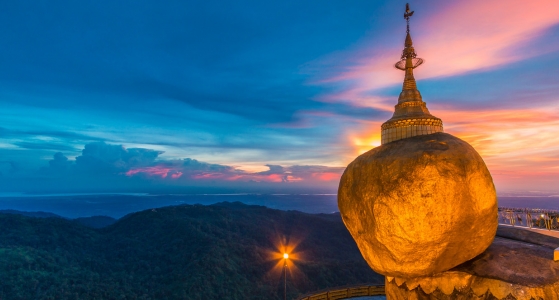
Kyaikto is a small pilgrim town in the Southeastern mountains of Myanmar, famous for its enormous gold leaf covered rock which is poised precariously at the edge of a steep cliff at the top of Mount Kyaiktiyo. Legend has it that a hair of the Buddha is enshrined in the pagoda that sits on top of the rock. Mount Kyaiktiyo is one of the three most sacred religious sites in Myanmar, along with the Shwedagon Pagoda and the Mahamuni Temple. Pilgrims come here from far and wide to worship and add gold leaf to the rock, which seems to defy gravity by delicately balancing on the edge of the 1100-metre high mountain. To reach the rock, you take a ride in an open truck from the base station. The vehicle will zig-zag up the mountain, a thrilling experience in itself lasting around 30 minutes. Once you alight, you continue to walk up the steep track. At the top, your efforts are rewarded with the amazing sight of the rock, balanced, seemingly precariously, on the cliff edge, glistening in all its glory. For exercise lovers, you can hike to the top of the mountain from Kinpun, which is an even longer (about 05 hours) and more exhausting journey than taking the truck, but the walk is mostly covered by the jungle canopy and gives the chance to see some lovely views and stupas along the way. The path is straightforward to the top and is well paved.
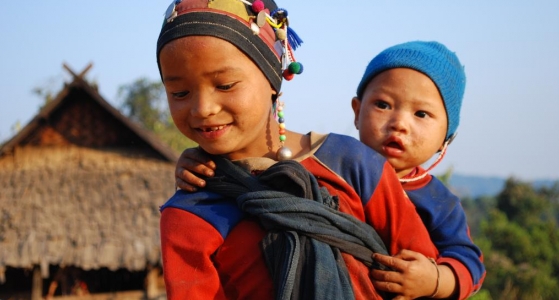
At 1320m above sea level, Kalaw was once a former British hill station in Myanmar surrounded by stunning green hills. It is a great place to see rural Myanmar with tea pickers, farmers and stunning villages. Many of Kalaw’s original colonial-era buildings remain, and it is also known as the centre for many trekking activities of the region. While the town itself is small and can be covered within half an hour’s walk, Kalaw has several trekking routes which takes one through the scenic Shan Hills. These routes vary in difficulty level and take from half-a-day to several days in length. A visit in town should not miss the mirrored pagoda Aung Chan Tha Zedi, also known as 'Mosaic pagoda' covered in gold and silver coloured glass mosaics; and the Thein Taung Paya Pagoda located on the top of the hill offers a 360-degree view of the surrounding hills and town. The surrounding villages are home to ethnic minorities such as the Palaung, Danu, Taung Yo... as well as the Nepali Gurkhas and Indian Hindus, Sikhs and Muslims who were brought to Kalaw by the British to build the railway line. Hence, Kalaw exhibits interesting cultural diversity. In the town center, there is a local market, a hub for local life where ethnic groups from the surrounding hills participate in once every five days. On these days, the market transcends into a bustling place where one can buy everything from fresh fruit, vegetables, to dried herbs, spices and pulses, to clothes and locally-crafted artisan pieces. Grab a delicious bowl of Shan noodles packed with chilli, garlic, tomatoes and pickles to keep you going, or opt for a handful of crunchy fried crickets if you’re feeling adventurous.
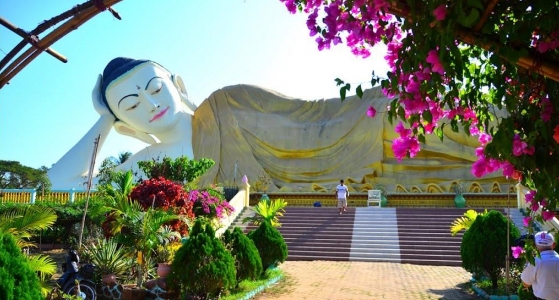
Bago (formerly Pegu) is the capital city of Bago Division on the main road between North and South Myanmar. Served as the capital of the Mon Kingdom from the 14th to the 16th century, it flourished as a center of trade, art, and culture until its destruction in the 18th century. With a rich and vibrant history that dates back to the old-aged centuries, Bago is a city steeped in cultural heritage and breathtaking attractions. From ancient temples and pagodas to bustling markets and scenic landscapes, Bago has something to offer to every traveler. A city tour in Bago usually includes a visit to the thousand year old Shwemawdaw Pagoda which has a spire taller than that of the Shwedagon Pagoda in Yagon and the dazzling architecture of Kambawzathardi Golden Palace - a reconstruction of King Bayinnaung's palace in the 16th century, a famous king of the Toungoo Dynasty. Other sightseeing includes a visit to one of the enormous reclining Buddhas, some inspiring smaller temples, lively markets, cheroot making and woodcarving centres. Bago is also home to some of the best forests of Myanmar and as such is heaven to someone who wants to explore the wildlife of Myanmar. The Pho Kyar Elephant Camp is located in the Yedashe Township, a reserve forest area on the bank of Thaing creek, where tourists can enjoy various activities involving elephants. The Moe Yun Gyi Wildlife sanctuary, located 29 km from Bago, is a paradise for bird watchers. It was established in 1988 and used to be a resevoir before naturally shifting to a wetland. Visitors can travel by boat for a bird-watch and an exploration of the wetland.
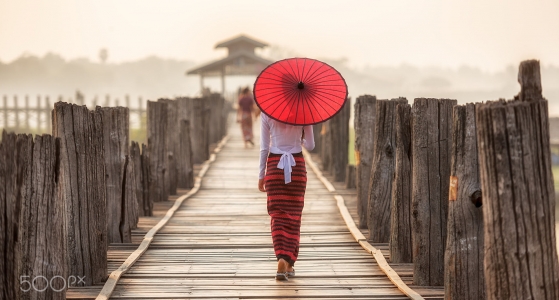
Known as the major destination on travellers’ itineraries after Yangon, Mandalay once served as the last royal city of Burmese kingdom before the country was colonised by Britain in 1885. As a home to fascinating monasteries, gem covered temples and the huge fortifications of the former royal palace, Mandalay now is the country’s second biggest city, a major commercial and cultural center. You can get a great feel for the city and its position in the heart of Myanmar as you watch the sunset from Mandalay Hill. Remember to leave your shoes in a shoebox at the bottom since it is a pilgrimage site not allowed to bring your shoes to the top of the hill. Apart from visiting the pagodas, temples and monasteries, take time to venture off outside of the city for many attractions in the surroundings. Visit the U Bein Bridge, the longest teak bridge in the world, built on Taungthaman Lake in 1849 in Amarupa, a township of Mandalay. From Mandalay, you can take a boat trip on the Irrawaddy River to the village of Mingun, famous for its brick pagoda built by King Bodawpaya in the early 19th century. It is home to one of the largest bells in the world with its 90 ton weight. The village of Sagaing, with its hill offering panoramic views over the Irrawaddy River, is also worth a visit. Like any other big cities, there’s no better way to explore Mandalay than immersing yourself in its sights and sounds of daily life. The cuisine here is an exotic blend of noodles, seafood, and rice, spiced up and enhanced by condiments and salads. Fruits, a feature of the tropical climate, are also an important part of this cuisine. The food has been influenced by the techniques, ingredients and flavors of Myanmar’s neighbors: Thailand, India and China. Head down to Zay Cho market, or one of the many other streets of bustling stalls, to sample an array of traditional Burmese and international dishes.
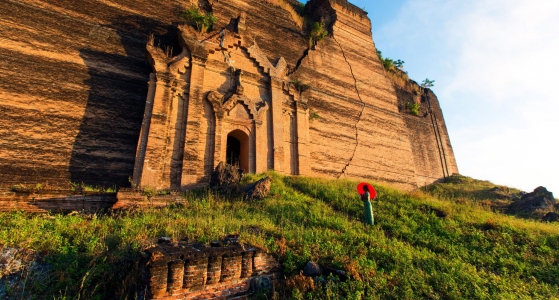
Mingun, a small riverside town in Sagaing Region, lies on the Ayeyarwady River on the west bank about 10km from Mandalay. Although it has never been a 'royal city', Mingun has much to offer with its bustling port and fascinating historical sights. The signature, unmissable destination in town is Mingun Pahtodawgyi. Known as the massive unfinished stupa built at the end of the 18th century, it was intended to build to a height of 150m, however, it was intentionally left incomplete when the King passed away and remained at the height of 50m until now. Even at this height, Mingun Pahtodawgyi is recorded as the largest pile of bricks in the world. An enormous bronze bell, Mingun Bell, cast to be on the top of the huge stupa if it could be completed now sits on display on the site. For a long time, it was the largest ringing bell in the world. Not far beyond the Mingun temple lies the Hsinbyume (Myatheindan) Pagoda built in 1816 by King Bagyidaw to commemorate his first consort and his cousin, Princess Hsinbyume who died in childbirth. Different from other pagodas in Myanmar, Hsinbyume Pagoda is deeply linked with the legendary Mount Meru, the centre of the universe in Buddhist cosmology. Seven wavy terraces representing the seven mountain ranges and oceans around Mount Meru lead up to the stupa at the top, which represents Mount Meru itself. Visitors can climb to the top of the pagoda to enjoy the cravings and the details of the building, get nice views of the surrounding landscape and take some gorgeous photos.
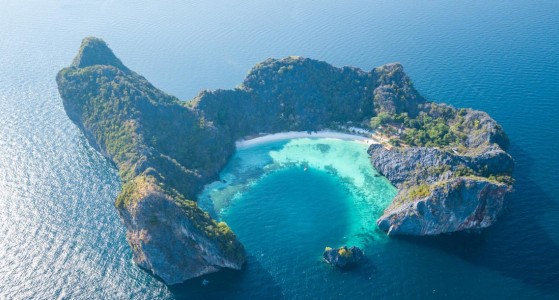
Scattered like pearls on a blue velvet bed sheet are a bunch of 800 islands scattered over the Andaman sea just off the eastern coast of Myanmar. This is Burma's tropical paradise of Mergui Archipelago encompassing stretches of pristine shores enclosed by azure coral reefs and towering limestone karsts. Most of the islands are uninhabited and the few islands that do have people remain home to tiny villages with hardly any infrastructure and mixed populations of Burmese and the semi-nomadic Moken, so-called 'sea gypsies', a nomadic water-based people who have lived in the region for centuries. In the Mergui Archipelago, Lampi island is the most well-known which offers spectacular scenery and a rich wildlife. It is also the core of the Lampi Marine National Park, the only marine national park in Myanmar declared an ASEAN Heritage Park in 2003. Covered by tropical lowland wet evergreen forest, the park area protects over 1,000 species of animals, plants and marine life. Species found in the area include hornbill birds, loggerhead turtles and dugongs. Rich in coral reefs, seaweeds and seagrass beds, the marine national park serves as important habitat for molluscs, crustaceans, echinoderms and fish. The seagrass meadows surrounding Lampi are important food for threatened species such as the green sea turtle and the dugong, as well as for a variety of birds. Apart from the obvious attraction of having beautiful white sand beaches all to yourselves as well as fantastic diving and snorkelling opportunities, the archipelago is also brilliant for exploring on foot and by kayak. The wildlife on land is surprisingly exciting too with monitor lizards, civet cats, pythons, gibbons and crab-eating macaques. The birdlife is very diverse, and the species you’ll see include white kits, eagles, eastern reef herons, and emerald doves.
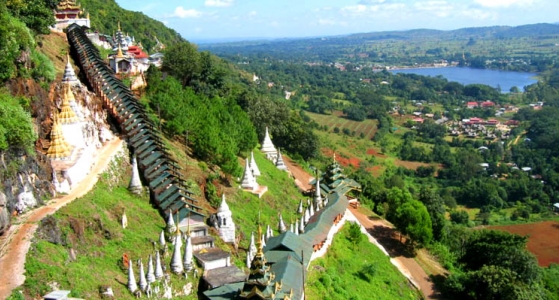
Pindaya is a pretty town set amidst the beautiful countryside of Shan State. Well-known for its picturesque surroundings, but Pindaya is more famous for its limestone caves. There are three caves on the ridge which runs north-south, but only the southern cave can be entered and explored. Pindaya cave is a huge cavern where thousands of Buddhist statues gathered there since the 18th century. The cave is 150m long and contains 8,000 Buddha images from materials such as alabaster, teak, marble, stone, bronze, lacquer and cement in various styles and from different eras, from the early Konbaung dynasty era to present day. As the cave serves as a religious site for monks, the statues and images are requested to be respect. Along with the caves, Pindaya is characterised by a feeling that time has taken a detour and passed it by. Oxcarts still pass through the town, the impressive, old Banyan trees are still creating shade and shelter alongside the dirt roads, and the curved temple spires still stand proud throughout the area. For adventurers, Pindaya is a great base to explore the Shan Plateau by trekking through the hills and tribal villages of the Danu and Pa-O ethnic groups which have their own languages and look quite distinct from the Burmese, both ethnically and in their dress.
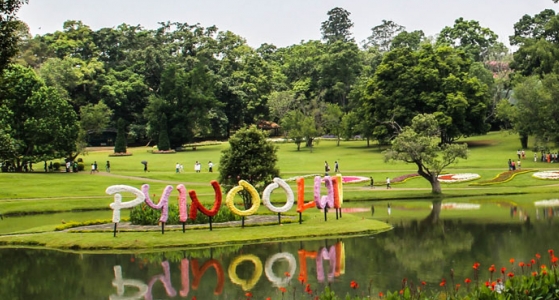
Pyin Oo Lwin or Pyin U Lwin is a quaint hill station located about 67 kilometres east of Mandalay. It is a small town nestled in the Shan Hills giving visitors a fascinating insight into the unique mixture of colonial history and contemporary culture of Myanmar. The town was once the summer capital under British rule as it offered cool and comfortable respite from the heat of the lower plains. Much evidence of British occupation and rule has remained, from old colonial homes to the chimes of the town's clock tower aligning with those of Big Ben in London, England. The high altitude and favourable climate makes the town well known for fruits, vegetables and exotic flowers, turns it into an important trading town in the Shan Mountain region. Trade and colonialism brought Indian, Nepalese and Chinese people to Pyin Oo Lwin and they are very much integrated into the history and culture of this diverse town. Colourful horse-and-carts are all over the town and are not only a charming reminder of colonial times here, but are also one of the best ways to explore Pyin Oo Lwin. The hills around Pyin Oo Lwin are home to some waterfalls including the most famous Dat Taw Gyaint Waterfall, and several villages inhabited by the ethnic groups such as Chinese, Chin, Kachin, Karen, Shan, Bamars... Visitors can hike to the tribal villages hidden in the forests to learn about their heritages and traditions which have existed for centuries.
View more

Customize Bagan tours


Adventure Travel Trade Association


American Society of Travel Agents


Family Travel Association


TripAdvisor


The guardian


World Travel Awards
ABOUT US
Why Us Trusted Travel Company What Makes Us Different Meet Our Team Southeast Asia Travel Guide Southeast Asia Tour Highlights Pre-departures Deposit & Payment Cancellation Policy Terms and Conditions Contact UsOur Destinations
Vietnam Tours Cambodia Tours Thailand Tours Indonesia Tours Malaysia Tours Philippines Tours Laos Tours Singapore Tours Myanmar ToursMulti-country
Vietnam Cambodia Tours Vietnam Cambodia Laos Tours Vietnam Thailand Tours Vietnam Cambodia Thailand Tours Thailand Malaysia Tours Thailand Malaysia Indonesia Tours Indonesia Thailand Tours Indonesia Malaysia Vietnam Tours Southeast Asia Tours 26 - 30 Days Southeast Asia Tours 18 - 26 Days Southeast Asia Tours 12 - 18 DaysTravel Themes
Best Southeast Asia Tours Southeast Asia Heritage & Culture Tours Southeast Asia Nature & Wildlife Tours Southeast Asia Family Tours Southeast Asia Honeymoon Tours Southeast Asia Adventure & Outdoor Tours Southeast Asia Beach & Island Tours Southeast Asia Cruise Tours Southeast Asia Tours 8 - 12 Days Southeast Asia Tours < 8 DaysSOUTHEAST ASIA TRAVEL COMPANY LIMITED
As local Southeast Asia Tour experts with over 15 years of experience, Southeast Asia Travel company has built a solid reputation as experts in designing custom tours across Southeast Asia including Vietnam, Laos, Cambodia, Thailand, Singapore, Malaysia, Indonesia, Myanmar, Philippines... Every Southeast Asia tour we offer is exclusively private, ensuring flexibility to suit individual preferences.
Read more
